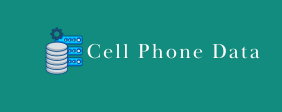From the moment a user first discovers a brand until they make the decision to purchase, they go through a process filled with key decisions, interactions, and touchpoints. This journey can be visualized through the conversion funnel , a fundamental tool for understanding how people go from being simple visitors to loyal customers. Within this funnel, each stage plays a unique role, and concepts like TOFU , MOFU , and BOFU help us structure more effective strategies tailored to the customer’s needs at each moment.
The conversion funnel is divided into three key stages: TOFU, MOFU, and BOFU, which represent different moments in the customer journey. TOFU (Top of the Funnel) focuses on attracting the audience’s attention, generating interest through educational or inspirational content. MOFU (Middle of the Funnel) seeks country email list to nurture that relationship, providing more detailed and relevant information that helps the user evaluate solutions. Finally, BOFU (Bottom of the Funnel) focuses on converting prospects into customers, offering closing arguments, promotions, or demonstrations that drive them toward a purchase decision.
Enriching your conversion funnel with the buyer persona
However, for a conversion funnel to be truly effective, it’s essential to consider the buyer journey, which gives us deeper insight into users’ motivations, emotions, and expectations at each stage. While the funnel shows us the quantitative flow of users , the buyer journey reminds us that each customer has a unique and individual journey . By combining both approaches, we can not only visualize and measure the process, but also personalize our strategies to provide a more relevant and effective experience, turning interest into results.
The buyer journey enriches the conversion funnel strategy because it allows us to design a detailed map of the interactions users have with our brand. Instead of treating all visitors the same, we can identify their stage and offer them personalized content that addresses their specific needs and concerns. For example, a user in the TOFU stage is looking for general information, while someone in the BOFU stage is ready to make a decision. Understanding these differences helps us create more effective marketing tactics , optimizing the conversion funnel and ensuring each user receives the right message at the right moment in their journey.
TOFU
At the top of the conversion funnel (TOFU), the main goal is to capture the attention of new users, who are generally looking for general information to solve a problem or need. At this stage, content should be educational, come together to witness the belovd engaging , and easy to consume, offering value without asking for anything in return. Users at the TOFU stage aren’t yet ready to make a purchase decision, but this first contact is crucial for generating visibility and positioning yourself as a trusted source.
To achieve this, it’s essential to understand the target audience’s characteristics, interests, challenges, and motivations, allowing us to design personalized attraction strategies. This is where the concept of buyer personas (referred to above) comes in, guiding us to create content that resonates with the specific needs of each audience segment . Content at this stage can include blogs, guides, infographics, videos, or social media posts, always focused on sparking user interest and motivating them to interact with the brand. Although still early in the process, this content should cultivate trust and begin to establish a relationship, effectively guiding the user to the next stages of the funnel.
MOFU
At the middle of the conversion funnel (MOFU), users have already shown interest in our brand and are looking for more specific solutions to their problems. At this stage, the goal is to nurture these users by providing them with more detailed content that helps them evaluate their options and advance their decision-making process. It’s essential to offer them additional value , guiding them step by step toward a potential conversion.
In MOFU, it’s key to understand what stage of the buyer’s journey users are at. They’re more engaged , but not yet ready to buy . Therefore, chile business directory we must offer them content that delves deeper into their needs, such as case studies, comparisons, webinars, or demos. This type of material helps answer their questions and build a stronger relationship , highlighting how our product or service can be the ideal solution. Here, the goal is to continue cultivating trust and educating users, keeping them interested and effectively moving them toward the final stage of the funnel.
BOFU
At the bottom of the funnel (BOFU), users are ready to make a decision , and the goal is to guide them toward the final action, such as a purchase, subscription, or any other conversion goal. At this stage, content should be highly persuasive and focused on showing the immediate and specific benefits of choosing your solution. It’s essential to facilitate their decision-making process and reduce any remaining barriers.
In BOFU, the buyer persona plays a crucial role by allowing us to understand the user’s final doubts or concerns. Content should directly address these objections and offer clear guarantees , such as customer testimonials, exclusive offers, or live demos. This content should be highly targeted and aimed at those who have already shown strong interest in our proposal, helping them take the final step with confidence. By providing accurate information and the necessary motivation , we convert users into customers and effectively complete the conversion funnel cycle.
